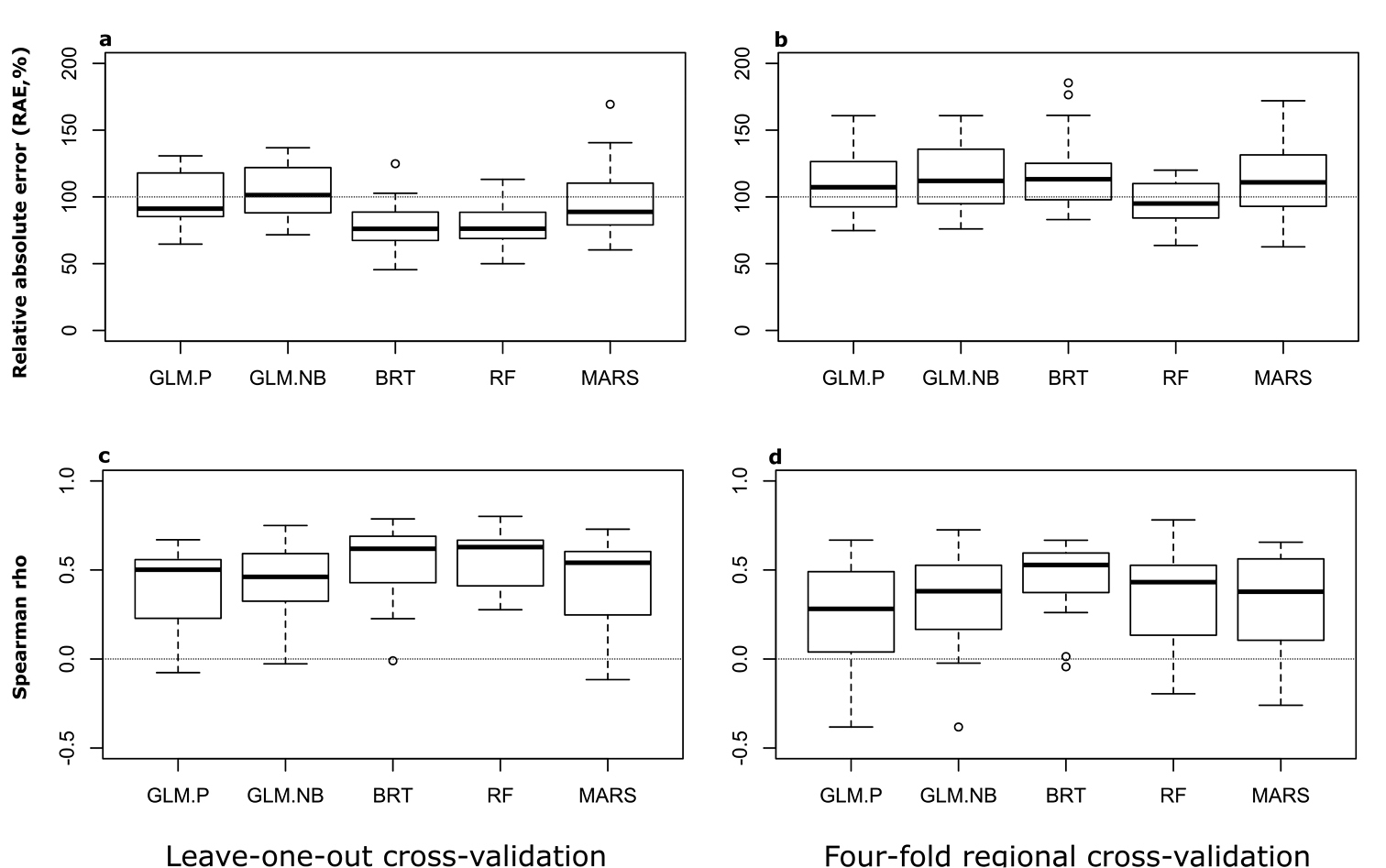
|
||
|
Detailed legend: Accuracy was measured for generalised linear models using Poisson (GLM-P) and negative binomial distributions (GLM-NB), boosted regression trees (BRT), random forests (RF) and multivariate adaptive regression splines (MARS) for predictions of the total number of alien species per region (relative absolute error, RAE; lower is better) (a, b) and the rank order of each region (Spearman’s rho; higher is better) (c, d). Boxplots represent variations in accuracy across 22 datasets of alien species richness for GLM-P, GLM-NB, RF and MARS, but not for BRT. Due to model convergence issues, results for BRT comprise only a subset of datasets and are thus not directly comparable with the results of the other techniques. Panels in the right left (a, c) refer to predictions evaluated using a leave-one-out approach, which measures the accuracy of predictions within the geographical range of the model calibration data. Panels in the right (b, d) refer to predictions evaluated using a four-fold regional cross-validation approach, which assesses the spatial transferability of the models. A few outliers lie outside the ranges of the Y-axes, see Tables A2 and A3 for the complete list of values. |